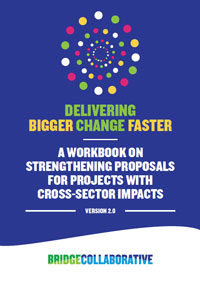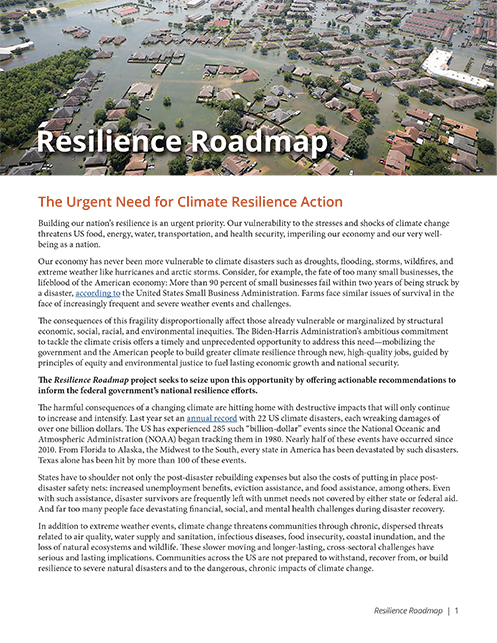Publications
Infrastructure Investment Must Incorporate Nature’s Lessons in a Rapidly Changing World
The authors of this commentary in One Earth suggest that infrastructure must become more resilient as the global climate changes and also more affordable in the economic and political context of a post-COVID world, and that we can solve this dual challenge and drive global infrastructure investment into a more sustainable direction by taking our cues from Nature.
Global Climate Change and Human Health: From Science to Practice, 2nd Edition
This chapter from Global Climate Change and Human Health: From Science to Practice discusses how various ecosystem services affect human health and describes how climate change might disrupt or alter the delivery of those services.
Connecting Ecosystem Services Science and Policy in the Field
The authors outline the framework used to teach environmental policy instruments through the “Five P’s”: prescription, property, penalty, payment, and persuasion and then discuss the discrete ecosystem services research required to effectively implement each tool.
Integrating Programmatic Expertise from across the US and Canada to Model and Guide Leadership Training for Graduate Students in Sustainability
In this paper, the authors describe the integrative approach they took to synthesize their collective knowledge of Leadership Training for graduate students in Sustainability (LTS) with their diverse programmatic experiences and, ultimately, translate that work into concrete guidance for LTS implementation and design.
GEMS Phase II Report: Coastal Restoration
This Phase II report of the GEMS project identifies metrics available to monitor the social and economic outcomes of a wide variety of coastal projects funded in the Gulf, using ESLMs to illustrate how these projects’ impacts cascade through the biophysical system to result in social and economic outcomes. Phase II expands the focus to assess socioeconomic metrics for 16 coastal project types, including habitat restoration, recreational enhancement, and water quality improvement projects.
Delivering Bigger Change Faster
While we know that cross-sector thinking is essential, it is not commonplace. Delivering Bigger Change Faster: A Workbook on Strengthening Proposals for Projects With Cross-sector Impacts, Version 2.0 is a resource for teams that are fairly new to cross-sector thinking but already have a proposal for creating multi-sector impacts.
Resilience Roadmap: The Urgent Need for Climate Resilience Action
Building our nation’s resilience is an urgent priority. Our vulnerability to the stresses and shocks of climate change threatens US food, energy, water, transportation, and health security, imperiling our economy and our very well-being as a nation. The Resilience Roadmap project seeks to offer actionable recommendations to inform the federal government’s national resilience efforts.
Life Cycle Assessment and Carbon Offset Potential for Cultured Milk Protein
This paper focused on answering the questions: (1) How does the environmental footprint of cultured milk protein compare to that of traditional milk protein (derived from cows)? and (2) If there is a significant difference in greenhouse gas (GHG) emissions between production of cultured and traditional milk protein, would developing carbon credits for cultured protein production be profitable for cultured protein producers?
Exploring the Use of Ecosystem Services Conceptual Models to Account for the Benefits of Public Lands: An Example from National Forest Planning in the United States
A shared understanding of the benefits and tradeoffs to people from alternative land management strategies is critical to successful decision-making for managing public lands and fostering shared stewardship. This study describes an approach for identifying and monitoring the types of resource benefits and tradeoffs considered in National Forest planning in the United States under the 2012 Planning Rule and demonstrates the use of tools for conceptualizing the production of ecosystem services and benefits from alternative land management strategies.
A Practice-Oriented Approach to Foster Private Landowner Participation in Ecosystem Service Conservation and Restoration at a Landscape Scale
Large landscape conservation planning often requires managers to coordinate with private landowners, especially in regions like the southern and western U.S. where private landownership dominates. It is often difficult to design conservation programs that incorporate varying landowner perceptions, values, and ownership objectives. Simple and transferable methods are needed to inform the design of landscape-scale conservation and restoration programs, and we propose that this can be done by targeting ecosystem services (ES) of interest to private landowners.










